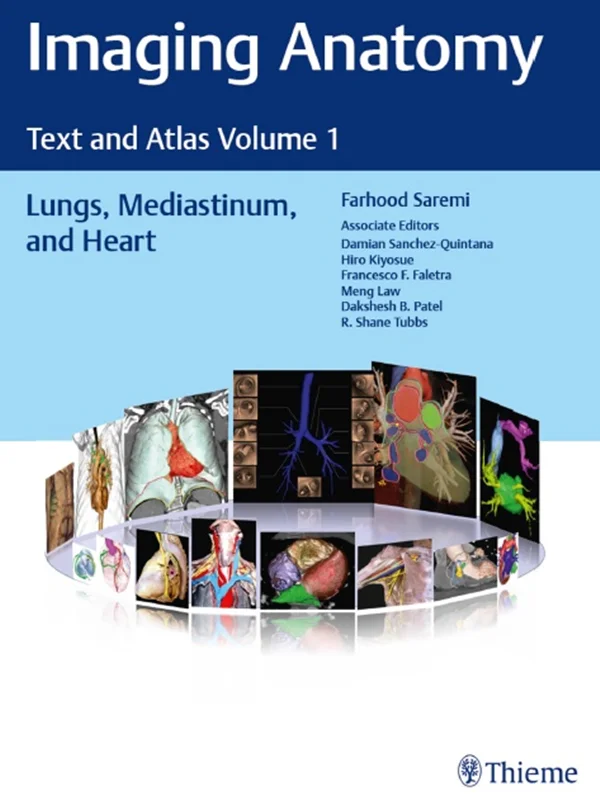Imaging Anatomy: Text and Atlas: Volume 1, Lungs, Mediastinum, and Heart
Farhood Saremi, Damian Sanchez-Quintana, Hiro Kiyosue, Francesco Faletra | 1626239886, 978-1626239883, 9781626239883, B08Y5TLYL3
PDF 2021
First volume in state-of-the-art radiologic text-atlas series details anatomy of the lungs, mediastinum, and heart
Normal imaging anatomy and variants, including both diagnostic and surgical anatomy, are the cornerstones of radiologic knowledge. Imaging Anatomy: Text and Atlas Volume 1, Lungs, Mediastinum, and Heart is the first in a series of four richly illustrated radiologic references edited by distinguished radiologist Farhood Saremi and coedited by Damian Sanchez-Quintana, Hiro Kiyosue, Francesco F. Faletra, Meng Law, Dakshesh Patel, and Shane Tubbs, with contributions from an impressive cadre of international authors.
The exquisitely crafted atlas provides high-quality multiplanar and volumetric color-coded imaging techniques utilizing CT, MRI, or angiography, supplemented by cadaveric presentations and color drawings that best elucidate each specific anatomic region. Twenty-one chapters with concise text encompass thoracic wall, mediastinum, lung, vascular, and cardiac anatomy, providing readers with a virtual dissection experience. Many anatomical variants along with pathological examples are presented.
Key Highlights
•More than 600 illustrations enhance understanding of impacted regions
•Lung anatomy including the pleura, pulmonary arteries, pulmonary veins, and lymphatics
•Discussion of the tracheobronchial system, mediastinum and thymus, thoracic aorta and major branches, systemic veins, lymphatics and nerves of the thorax, diaphragm, and breast
•Heart anatomy including the atrioventricular septal region; aortic, pulmonary, mitral and tricuspid valves; coronary arteries and myocardial perfusion; coronary veins; and pericardium
This superb resource is essential reading for medical students, radiology residents and veteran radiologists, cardiologists, as well as cardiovascular and thoracic surgeons. It provides an excellent desk reference and practical guide for differentiating normal versus pathologic anatomy.


